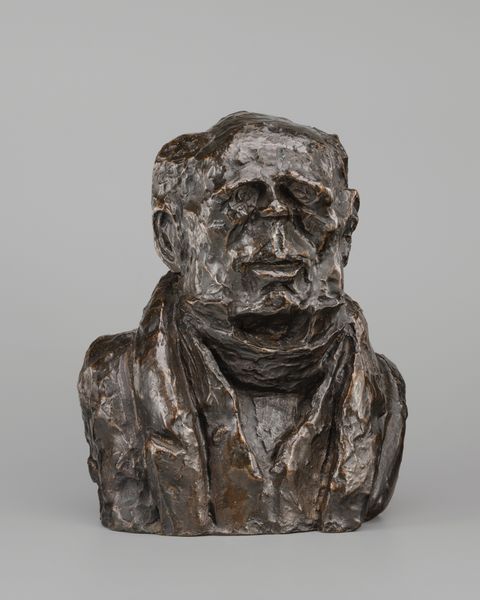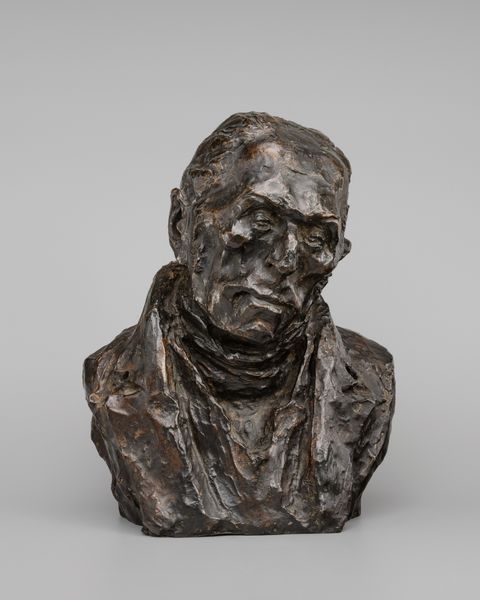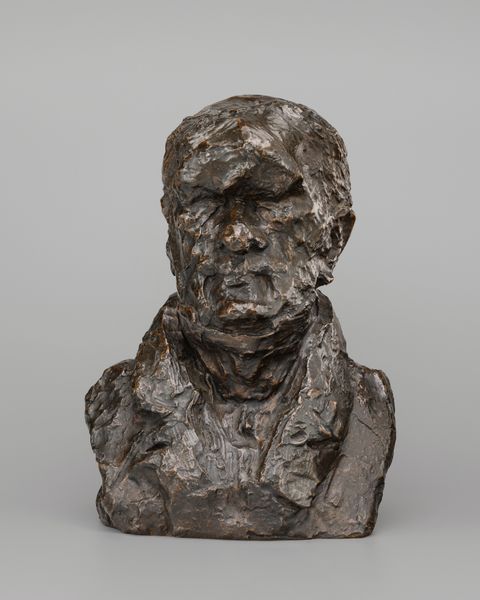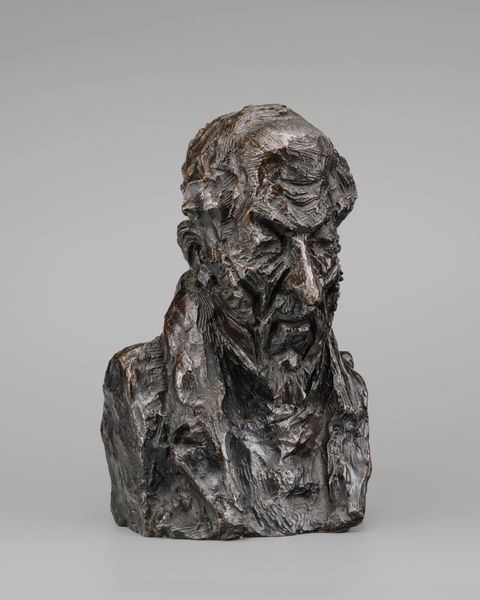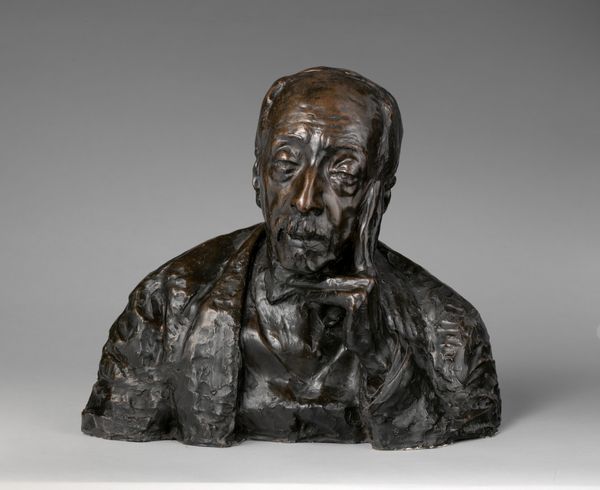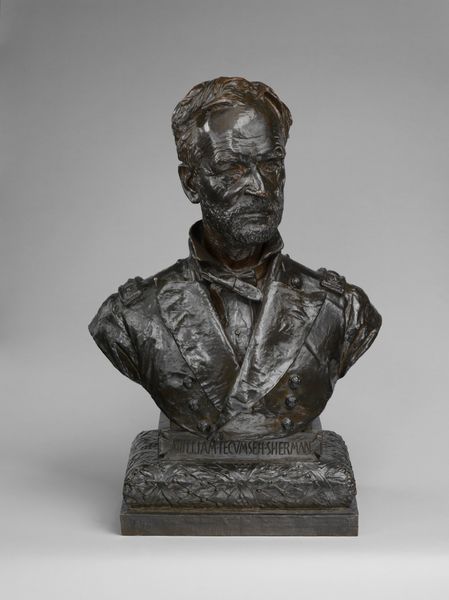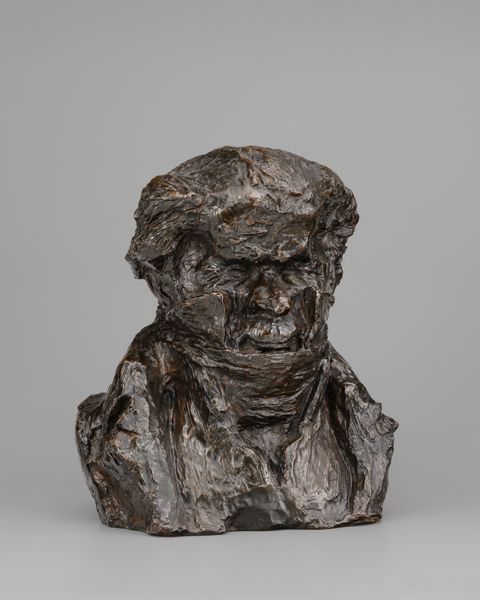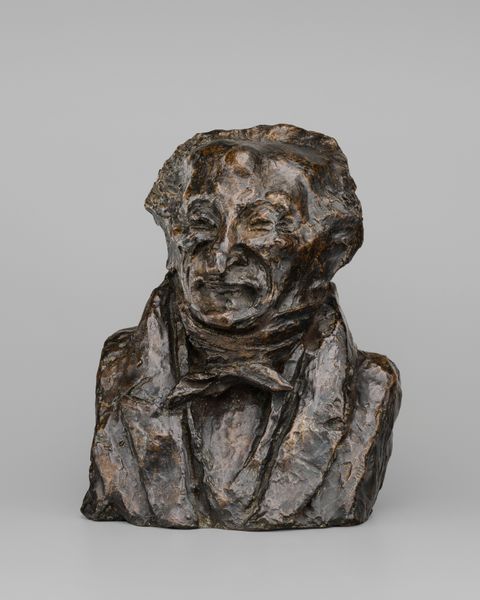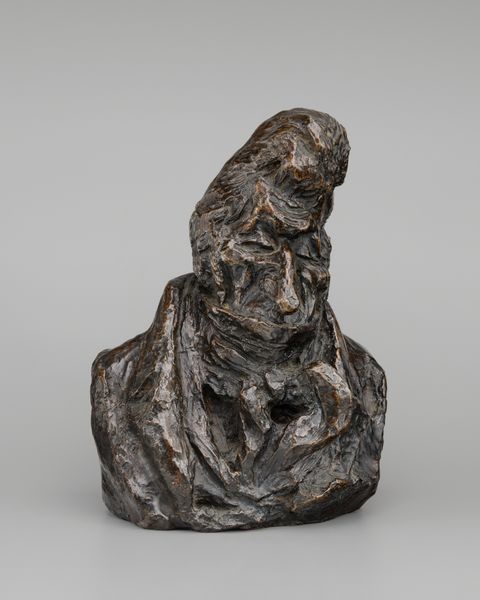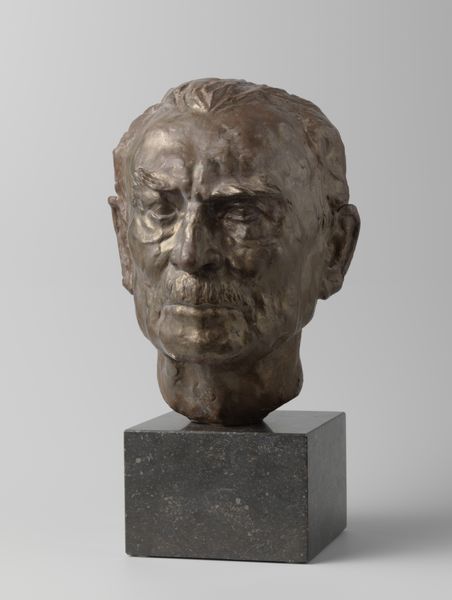
Dimensions: Overall (wt. confirmed): 21 × 20 × 12 1/2 in., 44.2 lb. (53.3 × 50.8 × 31.8 cm, 20 kg)
Copyright: Public Domain
Curator: Auguste Rodin sculpted this bronze portrait of Pierre Puvis de Chavannes sometime between 1885 and 1915. It’s currently housed at the Metropolitan Museum of Art. Editor: My immediate impression is one of gravitas. The way the light catches the textured surface of the bronze suggests a weight and solidity that seems almost...burdened. Curator: I agree. Considering Rodin's working process, the visible marks are key. We see the traces of his labor, the evidence of his additive and subtractive techniques. The rough surface belies the refinement associated with portraiture, suggesting a raw honesty. It moves beyond mere representation. Editor: Honesty, perhaps, but also idealized in a certain way. Consider the symbolism of the bust itself, divorced from the body, elevating the intellect and spirit. It’s not just a portrait of a man, but a representation of a celebrated artist and his enduring legacy. The beard, too, contributes to the iconography of the artist. Curator: But look closer. The apparent detail of the beard contrasts sharply with the hurried approximation of the coat. Where are the seams? What sort of fabric drapes in such craggy folds? These are not mere aesthetic choices but speak to the realities of the sculpting process and perhaps even to the constraints of artistic patronage. Rodin chose to focus his energy where he felt it mattered most, and those priorities say as much about his art-making process as about his subject. Editor: I can see that. And maybe the seemingly unfinished lower portion allows the viewer to project their own interpretation onto the piece, to engage with the sitter on a more personal, reflective level. It enhances that sense of timelessness. This could be a philosopher, a poet, any great thinker… Curator: So, it’s about artistic skill then, creating the feeling through specific actions like leaving portions of the work seemingly unfinished to create the impression of "gravitas" or "permanence"? Rodin may very well have sought to capture something more enduring than just a likeness, perhaps creating the *idea* of fame as much as fame itself. Editor: Precisely! Through careful manipulation of symbols and imagery, a fleeting likeness is made to embody a more profound and lasting significance. Curator: An interesting point. Analyzing it this way, thinking about the making itself versus the symbols imbued into the sculpture opens my eyes. Editor: Indeed. Perhaps in seeking both process and symbolism we get closer to grasping its full power.
Comments
No comments
Be the first to comment and join the conversation on the ultimate creative platform.
